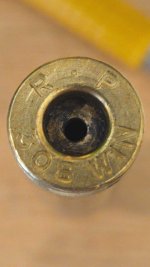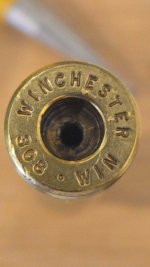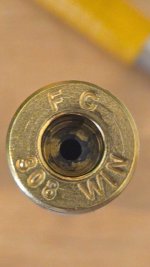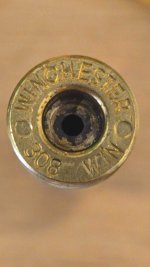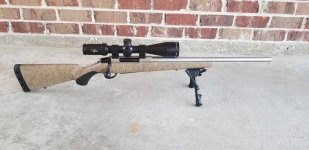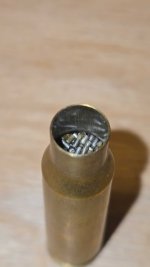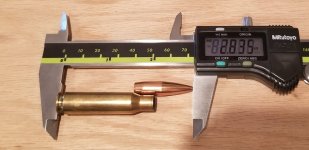I was looking into a different powder for my 308 load with 155 scenars. Currently using 47.5g Varget, CCI-200, R-P Brass, CBTO 2.216" or 2.835" COAL. This gives me .050" jump on a fairly new Tikka CTR 308 20" barrel. That load is compressed pretty good and yields 2840 avg and a 10 shot moa or less groiup at 100.
When I looked on Gordons, it looks like I'm not getting 100% burn in that short of tube. So I decided to give 8208xbr a shot. Have a lb of it and its starting to show back up. Loaded 44, 44.5, 45 & 45.3 (book max) and went shoot for pressure. Saw nothing. Primer looked fine, very easy bolt lift, no swipes or ejector marks. So loaded up a few just to see. Neither were near compressed loads, so I liked that.
45g 8208, 2.216" CBTO, .050" jump
45.3g 8208, 2.216" CBTO, .050" jump
What I noticed was the SD/ES were ridiculously low and velocities were up. It was +90* when I was shooting and humidity was like breathing pea soup. When I tested for pressure, I didn't see anything to speak of, but when I shot these 3 rounds each to get some velo numbers, I noticed a few things on the case head.
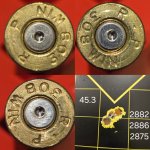
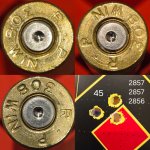
Of course, only 3 shots, but 45 was .617" and 45.3 was .412" at only 100 yard (I was limited by this range)
I did notice a slight ejector mark on 1 of each set. So should I back down to 44 / 44.5 and work back up to 45? I have .050" to play with. Do I seat longer to relieve case pressure but closer to lands will build pressure back up? Any thought yall have would be greatly appreciated.
When I looked on Gordons, it looks like I'm not getting 100% burn in that short of tube. So I decided to give 8208xbr a shot. Have a lb of it and its starting to show back up. Loaded 44, 44.5, 45 & 45.3 (book max) and went shoot for pressure. Saw nothing. Primer looked fine, very easy bolt lift, no swipes or ejector marks. So loaded up a few just to see. Neither were near compressed loads, so I liked that.
45g 8208, 2.216" CBTO, .050" jump
45.3g 8208, 2.216" CBTO, .050" jump
What I noticed was the SD/ES were ridiculously low and velocities were up. It was +90* when I was shooting and humidity was like breathing pea soup. When I tested for pressure, I didn't see anything to speak of, but when I shot these 3 rounds each to get some velo numbers, I noticed a few things on the case head.


Of course, only 3 shots, but 45 was .617" and 45.3 was .412" at only 100 yard (I was limited by this range)
I did notice a slight ejector mark on 1 of each set. So should I back down to 44 / 44.5 and work back up to 45? I have .050" to play with. Do I seat longer to relieve case pressure but closer to lands will build pressure back up? Any thought yall have would be greatly appreciated.

